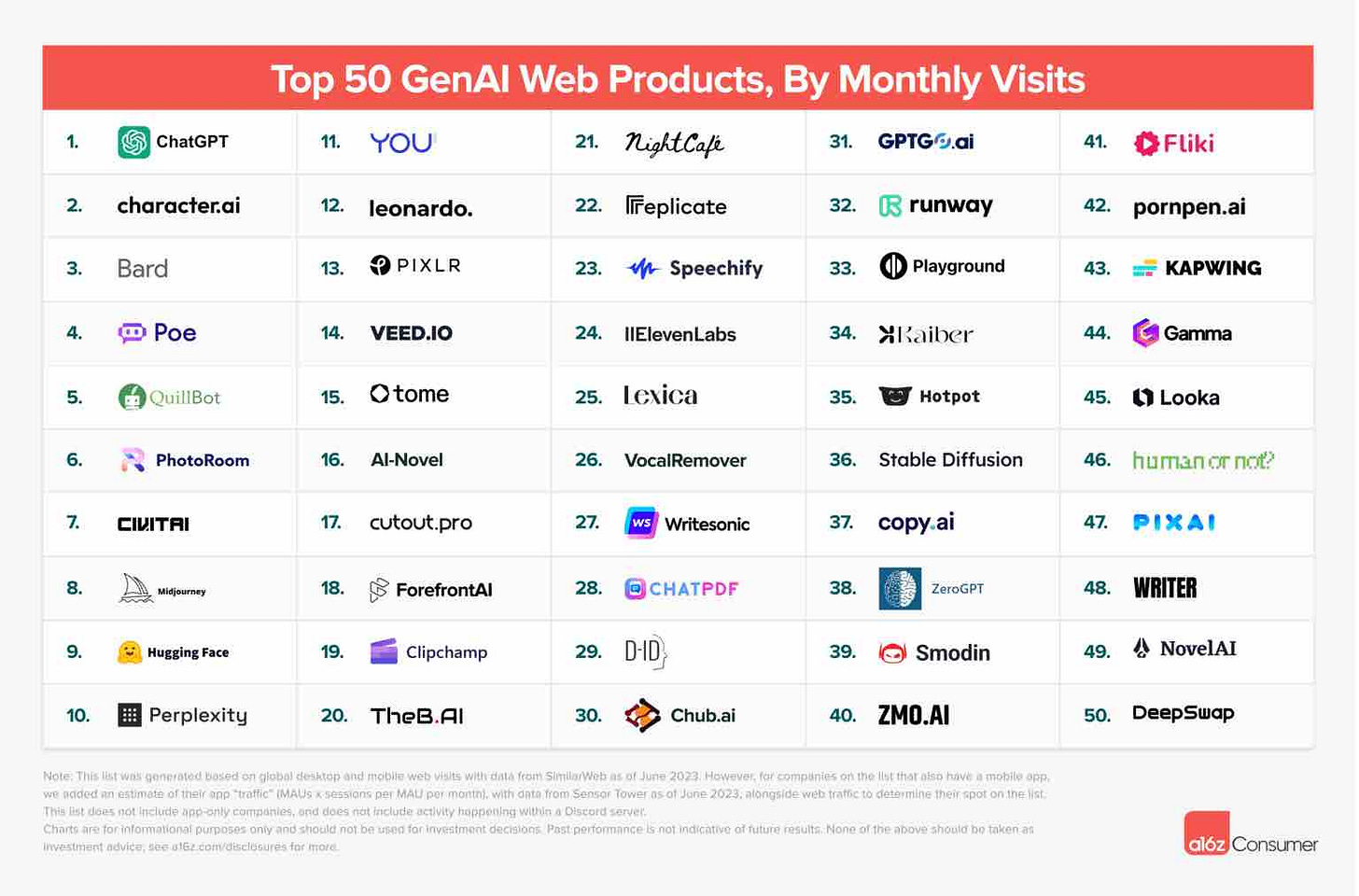Generative AI is not just a buzzword; it's a technological revolution rapidly transforming the consumer technology landscape. From startups to tech giants, companies are harnessing the power of AI to create innovative solutions and redefine user experiences. In this edition of AI for Every Scale, we delve deeper into the key generative AI building blocks and explore how consumers interact with these AI-driven products. Imagine a world where technology understands and anticipates your needs, even before you do. Welcome to the era of Generative AI.
The New Era of Generative AI
OpenAI's ChatGPT set a record by reaching 100 million monthly active users just two months post-launch. This achievement is not just about numbers; it signifies a paradigm shift in how consumers interact with technology. It underscores the immense potential of generative AI in the consumer market. Leading software companies, including Microsoft and Salesforce, integrate AI functionalities into their offerings, while startups introduce AI technologies across various software verticals.
The economic implications of this AI revolution are staggering. As highlighted by Goldman Sachs Research:
"Breakthroughs in generative artificial intelligence... could drive a 7% (or almost $7 trillion) increase in global GDP and lift productivity growth by 1.5 percentage points over a 10-year period." - Goldman Sachs Research.
The Building Blocks of Innovation
Generative AI is built upon a foundation of transformative deep learning architectures, primarily the transformer. These architectures enable software to understand and process complex multi-modal data, such as human language, images, and audio. The evolution from GPT-1 in 2018 to GPT-4 in 2023 showcases the rapid advancements in AI capabilities.
The seven pivotal generative AI primitives include:
Language Models: Beyond simple tasks, these models are now being used in areas like legal document analysis, financial forecasting, and even in creative writing and music composition.
Image Generation Models: From creating art to assisting designers in generating prototypes, these models redefine the boundaries of creativity.
Video Creation Models: The entertainment and advertising industries are on the cusp of a revolution, with AI-driven video generation tools paving the way for personalised content.
Video and Image Indexing Models: E-commerce and digital marketing sectors are leveraging these models to enhance user experience through visual search capabilities.
Speech Synthesis Models: The rise of voice assistants and interactive voice response (IVR) systems in customer service can be attributed to advancements in speech synthesis.
Speech Comprehension Models: These models are crucial in sectors like healthcare, where accurate transcription of doctor-patient interactions can enhance care delivery.
Vector Databases: Personalisation is the key in today's digital age. Vector databases enable businesses to offer users personalised experiences by understanding their unique preferences and behaviours.
Consumer Interaction with Generative AI
The consumer landscape is shifting, with generative AI products gaining traction. Data from SimilarWeb reveals that 80% of the top 50 GenAI web products were launched within the past year, indicating the rapid adoption and innovation in this space.
While ChatGPT dominates the market, other categories like AI companions and content generation tools are emerging. These tools are not just novelties; they enhance productivity, foster creativity, and offer companionship in an increasingly digital world.
Interestingly, the organic growth of these products indicates a genuine interest and need among consumers. The subscription model's success further underscores the value these tools bring.
Given this trajectory, we might soon see AI tools becoming as commonplace as smartphones.
Implications for Businesses
For business executives and entrepreneurs, generative AI offers a plethora of opportunities. It's not just about integrating AI into existing products; it's about reimagining business models and offerings. For instance, the fashion industry can leverage image generation models to create virtual fashion lines, while the entertainment sector can use video creation models to produce personalised content for viewers.
Moreover, the organic growth of GenAI products signifies a shift in consumer behaviour. Traditional marketing strategies might need to be revamped to cater to this new consumer segment that values innovation and is willing to pay a premium.
Embracing the AI-Driven Consumer Revolution
So, what does this mean for us as consumers, business leaders, and innovators? The transformative power of generative AI in the consumer technology sector is undeniable. As we've journeyed through its building blocks and consumer interactions, it's evident that this technology is not just a fleeting trend but a cornerstone of the next wave of innovation. For business leaders, entrepreneurs, and technologists, understanding and harnessing this power is no longer optional—it's imperative.
Generative AI is not just about technology; it's about reimagining user experiences, creating value, and driving growth. At this exciting juncture, the question is not whether to adopt it but how to integrate it seamlessly to stay ahead in this competitive landscape.
The key is always continuous learning, adaptation, and a forward-thinking mindset. As we've seen in our exploration of AI's role in management consulting, combining human expertise with AI capabilities can lead to unparalleled outcomes.






